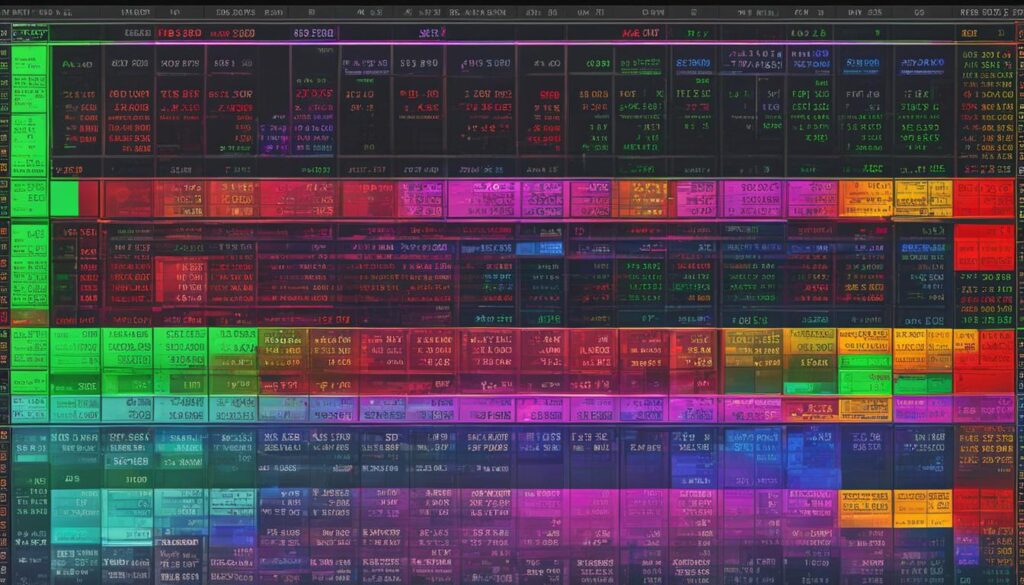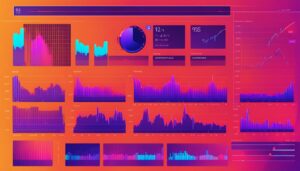As a professional in the field of forex trading, I know the importance of understanding the concept of pips. In this article, I will explain what a pip is and how it impacts forex trading. Whether you are new to forex or an experienced trader, having a clear understanding of pips is crucial for your success.
A pip in forex stands for “percentage in point” or “price interest point” and represents the smallest whole unit price move that an exchange rate can make. Most currency pairs are priced out to four decimal places, and a single pip is in the fourth decimal place (i.e., 1/10,000th). Pips are used in forex trading to measure the change in value between two currencies and are crucial for calculating profits and losses.
It is important to note that a pip is different from a bps (basis point), which represents 1/100th of 1% in interest rate markets. Pips, on the other hand, are specifically used in the context of forex trading to quantify small price movements within currency pairs.
Key Takeaways:
- A pip in forex represents the smallest whole unit price move that an exchange rate can make.
- Pips are used to measure the change in value between two currencies.
- Most currency pairs are priced out to four decimal places, and a single pip is in the fourth decimal place (i.e., 1/10,000th).
- Pips are crucial for calculating profits and losses in forex trading.
- Pips should not be confused with basis points (bps), which represent 1/100th of 1% in interest rate markets.
Now that we have a basic understanding of what a pip is in forex trading, let’s dive deeper into its significance and how it is calculated in the following sections of this article.
Understanding Pips in Forex
In forex trading, pips play a crucial role in measuring the movement in the exchange rate of a currency pair. Pips represent the smallest whole unit change in the price of a currency pair and are typically quoted to four decimal places.
Let’s take an example of the EUR/USD currency pair, which is one of the most widely traded pairs in the forex market. If the exchange rate of the EUR/USD pair moves from 1.2000 to 1.2001, it can be said that the exchange rate has increased by one pip.
In this example, the fourth decimal place represents the pip. Traders use pips to determine the profitability of their trades. If the exchange rate moves favorably and a trader makes a profit, the number of pips gained will determine the size of the profit.
For instance, if a trader buys the EUR/USD pair at 1.2000 and sells it at 1.2050, they would have gained 50 pips. The number of pips gained reflects the extent of the profit. Conversely, if the exchange rate moves against the trader, the number of pips lost will determine the extent of the loss.
Pips vary in value depending on the currency pair being traded. In pairs where the USD is the second currency (quote currency), such as EUR/USD, the pip value is fixed at 0.0001. However, in pairs where the USD is the first currency (base currency), such as USD/CAD, the pip value is influenced by the exchange rate.
Understanding pips in forex is essential for traders to accurately measure the movement in exchange rates and to manage their risk effectively.
Calculating the pip value can be done using a simple formula. For pairs where the USD is the second currency, multiply the trade value by 0.0001. For pairs where the USD is the first currency, divide the size of a pip by the exchange rate and then multiply by the trade value.
Importance of Pips in Forex Trading
Pips are of utmost importance in forex trading as they allow traders to assess the potential profit or loss of a trade based on the number of pips gained or lost.
By understanding the concept of pips, traders can determine their risk-reward ratio, set stop-loss orders, and calculate their potential profits before entering a trade. Moreover, pips help traders in analyzing market trends, identifying entry and exit points, and implementing effective trading strategies.
Overall, having a comprehensive understanding of pips in forex trading is vital for successful trading and effective risk management.
Calculating Pip Value in Forex Trading
Understanding how to calculate the pip value is essential in forex trading. The pip value represents the monetary value of a single pip movement in a currency pair. It helps traders determine the potential profitability or loss of a trade. Calculating the pip value requires considering factors such as the currency pair, exchange rate, and trade value.
Pip Value Calculation with USD as the Quote Currency
When the USD is the second currency in a currency pair, such as in the EUR/USD pair, the pip value is fixed at 0.0001. To calculate the pip value for this scenario, simply multiply the trade value by 0.0001.
Let’s explore an example:
EUR/USD exchange rate: 1.2345
Trade value: $10,000Pip value = Trade value * Pip increment
Pip value = $10,000 * 0.0001
Pip value = $1
Therefore, for every pip movement in this trade, the value is $1.
Pip Value Calculation with USD as the Base Currency
When the USD is the first currency in a currency pair, such as in the USD/CAD pair, calculating the pip value involves considering the exchange rate. Follow these steps to determine the pip value:
- Calculate the pip increment (the fourth decimal place in most currency pairs):
USD/CAD exchange rate: 1.3456
Pip increment = 0.0001
- Divide the pip increment by the exchange rate:
Pip increment / Exchange rate = 0.0001 / 1.3456 = 0.00007435
- Multiply the result by the trade value:
Trade value: $10,000
(Pip increment / Exchange rate) * Trade value = 0.00007435 * $10,000 = $0.7435
The pip value in this scenario is $0.7435 for every pip movement in the trade.
It’s important to note that the pip value may vary for different currency pairs due to their exchange rates and pip increments.
Forex Pip Calculator
To simplify the process of calculating pip values, traders can use a forex pip calculator. These online tools allow traders to input the currency pair, trade value, and other relevant details to quickly determine the pip value. Forex pip calculators are especially helpful for traders who deal with multiple currency pairs and trade sizes.
With the help of a forex pip calculator, traders can accurately calculate and monitor the pip values for their trades, enabling them to make informed decisions based on potential profits or losses.
Pip Calculation Example
Let’s take an example to better understand the meaning of a pip and how it is calculated in forex trading.
Scenario 1:
I purchased 10,000 euros against the dollar at a rate of 1.0801 and sold it at 1.0811. In this trade, I gained a profit of 10 pips or $10.
Scenario 2:
I bought 100,000 USD against the Canadian dollar at a rate of 1.2829. Later, I sold it at 1.2830. In this trade, I earned a profit of 1 pip or $7.79.
It’s worth noting that the pip value calculation differs in Japanese yen pairs, such as EUR/JPY and USD/JPY, as these pairs are quoted with two decimal places rather than four.

As the examples demonstrate, the pip in forex trading refers to a small unit of measurement for changes in currency exchange rates. Trading profit or loss is determined by the number of pips gained or lost in a trade. Calculating pips accurately is essential for managing risk and making informed trading decisions.
Conclusion
Pips are a fundamental concept in forex trading and play a significant role in determining the profitability of a trade. Understanding forex trading pips explained allows traders to quantify the value of their potential gains or losses and manage their risk accordingly.
By calculating the forex pip significance, traders can assess the potential profit or loss of a trade based on the number of pips gained or lost. Pips serve as a key metric in forex trading and are essential for analyzing and making trading decisions.
In conclusion, pips are crucial for measuring price movements in the forex market. Traders need to understand the significance of pips and how to calculate their value in order to gauge their potential profits or losses accurately.
FAQ
What is a pip in Forex?
A pip in Forex stands for “percentage in point” or “price interest point” and is the smallest whole unit price move that an exchange rate can make. It is used to measure the change in value between two currencies in Forex trading.
Why are pips important in Forex?
Pips are important in Forex because they play a crucial role in determining the profitability of a trade. The number of pips gained or lost determines the size of the profit or loss, allowing traders to quantify their potential gains or losses and manage risk accordingly.
How do you calculate pip value in Forex trading?
The pip value in Forex trading depends on the currency pair, exchange rate, and trade value. When the USD is the second currency in the pair, the pip value is fixed at 0.0001. To calculate the pip value, multiply the trade value by 0.0001. When the USD is the first currency in the pair, the pip value involves the exchange rate. Divide the size of a pip by the exchange rate and then multiply by the trade value to calculate the pip value.
Can you provide an example of pip calculation in Forex trading?
Sure! If you bought 10,000 euros against the dollar at a rate of 1.0801 and sold at 1.0811, you would have made a profit of 10 pips or $10. Similarly, if you bought 100,000 USD against the Canadian dollar at a rate of 1.2829 and sold at 1.2830, you would have made a profit of 1 pip or $7.79.
What is the significance of pips in Forex trading?
Pips are a fundamental concept in Forex trading and are essential for analyzing and making trading decisions. Understanding pips allows traders to assess the potential profit or loss of a trade based on the number of pips gained or lost. Pips serve as a key metric in Forex trading and are crucial for managing risk and determining profitability.





